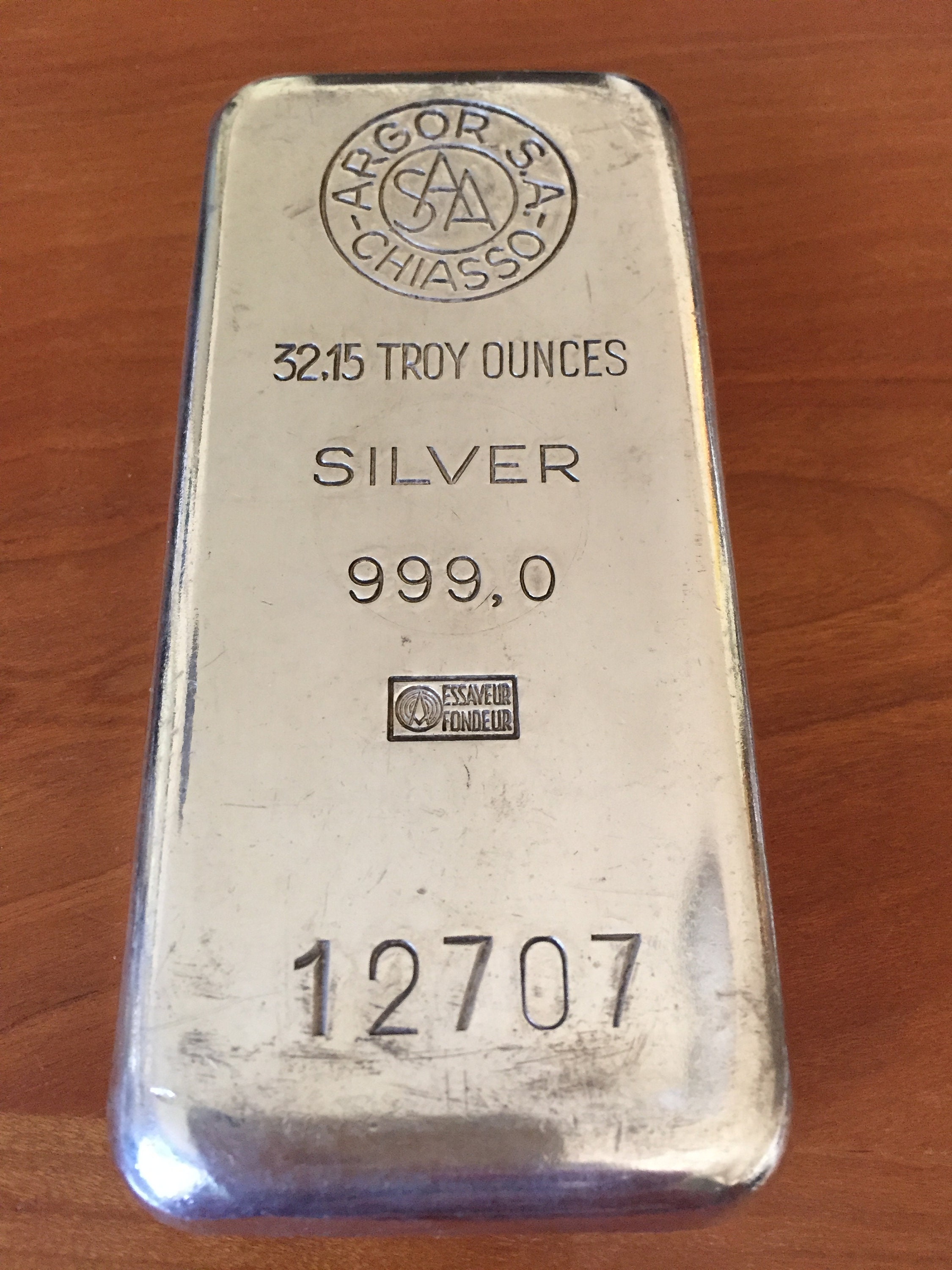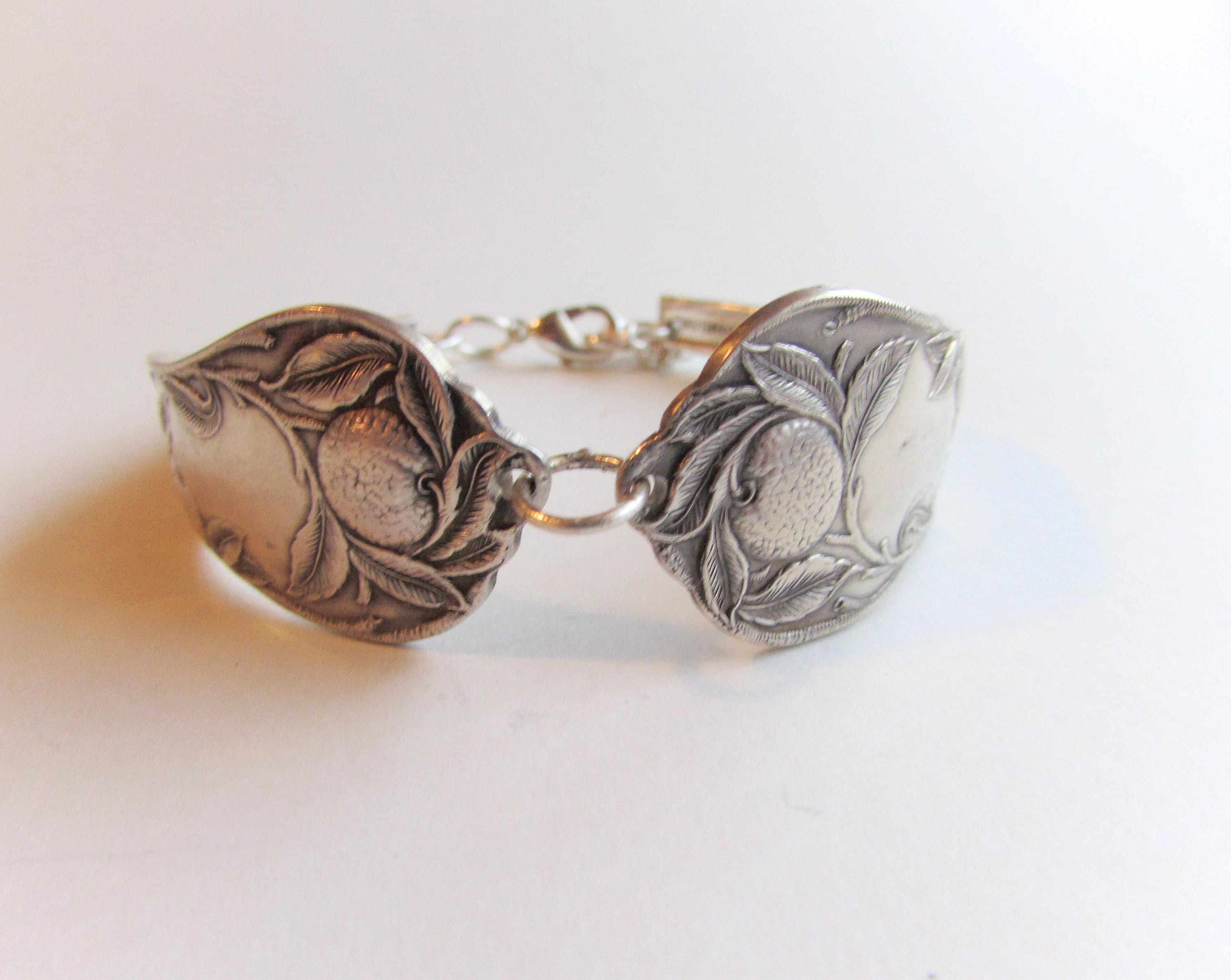Of the four precious metals used in jewellery, Silver is the bridge between luxury and accessibility. Its white-grey sheen exudes a classiness that doesn’t cost a fortune. With its long history as a prized treasure rivalled only by Gold, there is value to Silver that has proven to be timeless.

Native Silver on native arsenic (Source: Minerals and Rocks)
In this guide, we will go over the identifying traits of Silver, its popular variations in jewellery, its place in history and culture, and tips on buying and maintaining Silver jewellery.
What is Silver?
Silver is a chemical element that takes the form of a shiny white metal. It is scarce, ductile, and lustrous, making it valuable for a variety of reasons. However, it does tarnish over time, turning black quickly if not taken care of regularly.
1. Fine Silver

Argor S.A. Chiasso 999 Silver bar (Sources: Etsy)
This is Silver that is as pure as it can be. It is 99.9% Silver containing only the tracest amounts of other metals. Because Silver at this level of purity is very soft, it is hardly ever used outside of Silver bullion coins and bars for investments.
2. Sterling Silver

Edwardian sterling Silver jewellery box (Source: Online Galleries)
With a purity level of 92.5%, sterling Silver is the most valuable type of Silver that can still be used to craft jewellery and the most expensive Silverware.
It is a result of alloying Silver with 7.5% copper and nickel. The presence of any of these other metals increases the durability of the Silver. It is hypoallergenic, with only rare, old pieces containing zinc that could possibly cause irritation.
3. Other Types of Silver

1804 Britannia Silver coin (Source: Coin Archives)
Silver has many other variations that are either rarely used for commercial purposes or Silver in name only.
Britannia Silver is 95.84% Silver and 4.16% copper, and is mostly utilised for artisanal projects and Silver bullion because of its softness. German or nickel Silver, meanwhile, isn’t Silver at all, as it is an alloy of nickel, copper, tin, zinc, and other metals.
The History and Significance of Silver
Silver was one of the first metals used by humans, with Silver artefacts found in Greece and Turkey dating from as far back as 4000 BC. Ancient Egyptians valued it more than Gold up until 1500 BC.

120 AD Roman denarius (Source: Original Skin Coins)
Because early civilisations had yet to invent methods to harden Silver, it was mainly used for barter and currency. The Greeks and Romans traded Silver coins for resources. The Roman Empire’s mining of Silver amounted to tens of thousands of tonnes extracted throughout Central Europe.
The Celts alloyed Silver with bronze for jewellery, and used its base form as part of its ring currency. Viking raids in Central Europe around 800 AD brought Silver to Scandinavia, which was then used to craft jewellery. The discovery of Swedish Silver deposits around the same time also led to more Silver jewellery being worn by Europeans throughout the Middle Ages.

Celtic Silver torc from the Historic Museum of Bern (Source: Flickr)
Aztec and Incan cultures crafted Silver jewellery with the help of their cupellation technology, which separated Silver from ores and alloyed metals. Spain’s plunder of Central and South America during the 16th century led to massive Silver production and facilitated the country’s imperial ambitions.
An estimated 85% of Silver produced globally between 1500 and 1800 came from Bolivia, Mexico, and Peru.
The Georgian period in British history (1714-1837) marked the boom of Silver jewellery, especially among the growing middle class, thanks to the adoption of die striking by jewellers and the influx of Diamonds in Europe.

Georgian Silver amethyst and Diamond brooch (Source: Lillicoco)
By the 19th century, the discovery of Silver deposits across North America shifted most Silver production to that part of the globe. Silver also helped advance photography during this time.

Edwardian sterling Silver garnet necklace (Source: Etsy)
In modern times, Silver is used in jewellery, investments, photography, dentistry, medicine, and electronics. Mexico, Peru, and China lead global Silver production, respectively.
Buying and Maintaining Silver Jewellery
Silver jewellery follow official hallmarking standards similar to that of Gold, platinum, and palladium. Jewellery made in the UK should have a sponsor’s mark, a fineness mark, and an assay office’s mark. The sponsor’s mark identifies the jeweller that made the piece, the fineness mark indicates the amount of Silver in the piece, and the assay office’s mark lets you know which assaying office in the country verified the legitimacy of the piece.
Fineness marks for valuable Silver jewellery include:
- 999 — 99.9% Silver, often called fine Silver
- 958 — 95.84% Silver and 4.16% copper, used for Britannia Silver
- 925 — 92.5% Silver and 7.5% copper, nickel, or zinc, often called sterling Silver
- 800 — 80% Silver and 20% other metals, sometimes called continental Silver and often seen on German and Italian-made Silver jewellery
Britannia Silver also has either the traditional hallmark of a lion’s head or a female figure facing left, while sterling Silver features a stamp of STERLING, STER, STG, or Sterling Silver.
Jewellery sold as Silver without any such hallmarks are likely not legitimately made of Silver. There are, however, jewellery that are not necessarily made of Silver but do have elements of real Silver and have value:

Victorian Silver-plated paste brooch (Source: Lillicoco)
Silver-plated jewellery are jewellery with a thin layer of fine Silver electroplated onto a base metal such as brass, copper, or nickel. They are not as valuable as Silver jewellery with actual Silver as their base. The plating will come off over time, revealing the darker colour of the base metal.

1910 Silver-filled spoon bracelet (Source: TheCraftyVision)
Silver-filled jewellery are jewellery with a thin layer of no less than 925 Silver generally applied by brazing, soldering, or welding. The Silver layer must be at least 5% of the whole item. Like Silver-plated jewellery, Silver-filled jewellery are not as valuable as actual Silver jewellery, and they degrade faster and more easily.
Silver Jewellery Maintenance
Because tarnishing is an inevitability for Silver jewellery, here’s what you can do to slow down the process:
- Store Silver jewellery in airtight bags or air-restricted boxes. Exposure to humidity speeds up tarnishing.
- Avoid contact and exposure to chemicals. This includes household cleaning items and personal beauty products like makeup or lotions. Wear the jewellery after you have applied makeup. Do not wear Silver jewellery while swimming or showering.
- Clean after use. Body fluids can build up on the surface, so make sure to clean your Silver jewellery with a Silver cleaning product after wearing them. Rinse with warm water and dry with a soft cloth. This can also be done to remove the black coating as a result of tarnishing. Having a professional jeweller clean it is yet another simple option if it’s already tarnished.




